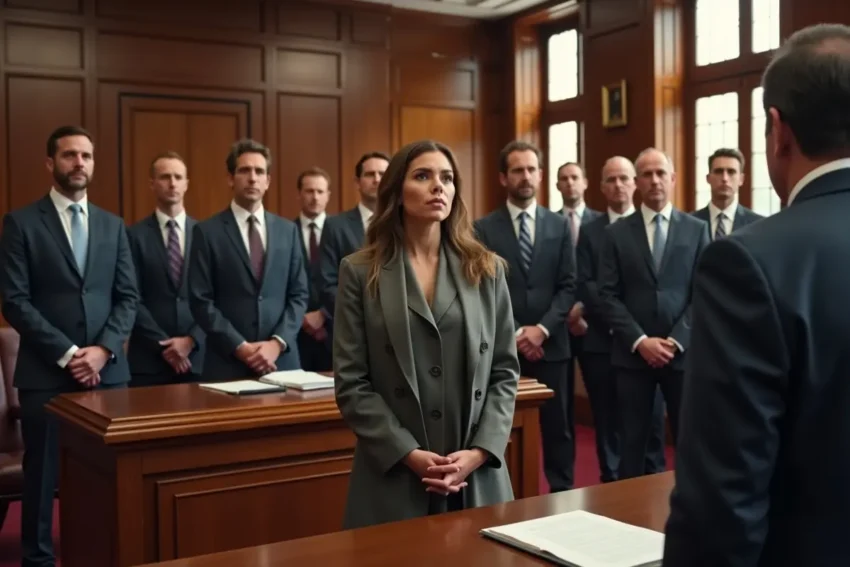From the moment an individual steps into a courtroom to challenge a corporation, an unseen machinery of legal strategy shifts into motion. Corporations wield deep pockets, armies of in-house counsel and hired specialists, and a playbook refined over years of litigation.
Ordinary people, by contrast, must rely on their lawyers’ ability to level the imbalance. When you learn more about Metier Trial Lawyers, they can step into that gap, coordinating investigation, expert witnesses, and procedural maneuvers to counteract the corporate behemoth’s advantage.
Pre-trial Warfare: Discovery, Delay, and Stonewalling
The true battle often lies before the trial begins. Corporations utilize their financial and legal resources to resist discovery requests, demand overly broad or burdensome document production, or file motions to dismiss.
These tactics function as delaying strategies, forcing plaintiffs to exhaust their resources before the case is ever heard. Deposition games then begin: corporations send seasoned attorneys to take aggressive depositions, hoping to confuse or discredit individual plaintiffs.
When numerous documents, electronic communications, and internal emails must be unearthed, the sheer volume can overwhelm even a diligent plaintiff’s team.
Expert Witnesses as a Line of Defense and Attack
Once the courtroom stage is set, expert testimony becomes a critical battleground. Corporations retain high-priced experts, engineers, economists, and medical specialists, whose primary task is not just to rebut the plaintiff’s expert but to sow doubt. They may propose alternative hypotheses, question methodology, or highlight uncertainties.
Meanwhile, the plaintiff’s experts must be bulletproof, with credentials and methods that survive cross-examination. Because the outcome often hinges on “who the jury believes,” this duel in the expert arena can decide whether the plaintiff ever overcomes the corporation’s defenses.
Jury Selection: Framing the Lens
Long before evidence is admitted, both sides compete for favorable jurors. Corporations often hire consultants to help evaluate the psychology, demographics, and even implicit biases of potential jurors. Their goal is to shape a jury less sympathetic to individuals and more accepting of corporate narratives.
Plaintiffs must counter by ensuring their attorneys are familiar with the process of challenging the exclusion of jurors who may lean in favor of accountability. The courtroom door thus opens with a jury already filtered by corporate logic.
Trial: Narrative vs. Obfuscation
During trial, the corporate defense often employs obfuscation—complex charts, legalistic jargon, multiple witnesses offering conflicting versions of events, and attempts to distract jurors with minutiae. Their lawyers are trained to fragment the narrative, isolating details from the broader story.
The plaintiff’s attorneys, on the other hand, must maintain coherence, humanizing the plaintiff and keeping emotional and factual threads clear for jurors. Every cross-examination, every exhibit, every witness calibration is a contest over narrative control.
Last Moves: Motions, Appeals, and Settlement Pressure
Even after the closing arguments, the battle continues. Corporations routinely file post-trial motions (e.g., for judgment notwithstanding the verdict) or seek reductions in damages. If the jury rules against them, they often appeal on technical or procedural grounds, dragging out the case for years.
In the meantime, they may offer settlement deals when plaintiffs are financially exhausted, pressuring them to accept less than full accountability. The threat of a protracted appeal often figures heavily in a plaintiff’s decision to settle.
The Role of Dedicated Advocates and Law Firms
To survive this gauntlet, individuals must often lean on law firms adept at taking on large adversaries. Such firms coordinate investigators, preserve fragile evidence, hire top experts, and manage the legal mechanics of delay and counterattack.
These attorneys also often pursue parallel strategies: public pressure, media exposure, regulatory complaints, class actions, or legislative advocacy. In short, the courtroom fight is only one arena in a much broader struggle.
A Stark Contrast: Corporate Power vs. Individual Voice
While corporations can allocate millions to legal funds, sponsor lobbying, and influence regulatory bodies, ordinary people who are harmed often must act within strict time limits, with limited budgets, and under emotional duress.
The imbalance is systemic. Corporations may invoke arcane statutes, forum-selection clauses, arbitration demands, or indemnity structures; all designed to erect barrier after barrier before accountability can even reach a jury.
The Courage in Accountability
When a harmed individual prevails, or even forces a meaningful settlement, this is not just a private victory. It signals that power can be challenged, that processes can be fair when matched by fierce advocacy. It also reflects the work of law firms that choose to stand with the vulnerable, even knowing the odds are against them. The presence of bold trial lawyers keeps corporate accountability alive.
Conclusion
Behind the scenes of every courtroom where power meets the powerless lies a complex dance of legal strategy, resource disparity, narrative control, and procedural tactics. Each stage, from discovery to jury selection to motions, tilts toward the side with greater means.
Yet individuals who commit to seeking justice, backed by fierce advocacy, can break through. Learn more about Metier Trial Lawyers to get an understanding of what really occurs behind those courtroom doors. It is crucial for anyone seeking accountability in the face of corporate might. It underscores why firms willing to take on that fight are so vital.

